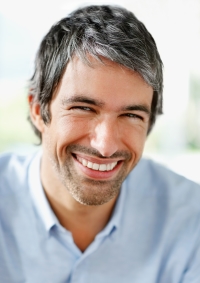By Melissa Mellie
 Rosacea is an adult skin condition which usually commences in the 30’s and worsens with age. The intensity may vary with weather, stress and physical activity. The medical treatment available today are topical creams, antibiotic pills, antibacterial washes, lasers pulsed light therapies, photodynamic therapy and isotretinoin. Some other lasers that are known to treat rosacea are KTP laser, diode laser and Nd: YAG laser. Thickening on the nose and cheeks caused by chronic rosacea can be cured with CO2 laser and erbium: YAG laser. A non laser treatment IPL is also available to cure rosacea.
Rosacea is an adult skin condition which usually commences in the 30’s and worsens with age. The intensity may vary with weather, stress and physical activity. The medical treatment available today are topical creams, antibiotic pills, antibacterial washes, lasers pulsed light therapies, photodynamic therapy and isotretinoin. Some other lasers that are known to treat rosacea are KTP laser, diode laser and Nd: YAG laser. Thickening on the nose and cheeks caused by chronic rosacea can be cured with CO2 laser and erbium: YAG laser. A non laser treatment IPL is also available to cure rosacea.
Laser beam helps in removing broken vessels and the surrounding erythema. Additional advantages benefitted from laser therapy include even skin tone, new collagen development, decrease in the visible appearance of fine lines and wrinkles and collagen production. Skin quality improves dramatically with such added advantages like minimized pore-size. While laser treatment is highly effective, removing the individual rosacea triggers and avoiding the sunlight (which causes instant flare) are equally important.
The chief conditions cured by the laser treatment are:
• Redness
• Dilated blood vessels
• Thick skin on nose and cheeks
Short-pulse-duration-pulsed-dye-laser therapy goes well with the treatment of small vessels. These include pulsed dye laser (585 or 595nm), the potassium titanyl-phosphate laser (532nm) and the diode pumped frequency-doubled laser (532nm).
Pulsed dye laser (PDL)
The pulsed dye laser (PDL) was the first laser treatment employed efficiently in the treatment of the chronic skin condition, rosacea. It focuses on the skin that is vasculature. The red areas comprise blood and blood vessels. The pulsed dye laser (585-595nm) with a 10-12mm spot size has a pulse period, lengthy enough to make the effect really worth trying. An intense beam of light is used on the affected areas. The heat radiated from the light annihilates the blood vessels keeping the surrounding skin undestroyed and intact. The after effects noticed are redness, swelling, peeling and bruising but they subside in a couple of days. Avoiding the sun and applying sunscreen when going out are important as skin sensitivity increases. Patients experience reduction in the symptoms in just one or two treatments. PDL is absolutely safe.
The treatment of larger vessels need long duration pulses. Examples of such lasers are diode laser (810), the long-pulsed Alexandra laser (755nm) and the long-pulsed Nd: YAG laser (1064).
The Diode laser
 Diode laser is acknowledged as hair removing technique, but it produces amazing positive results on rosacea skin as well. The longer wavelength laser, the diode laser (810 nm) is effective against deeper facial veins. It works by generating heat by the laser’s specific high energy light wavelength. The redness diminishes as vascular lesions and blood vessel inflammation shrinks. There is no persistent discomfort associated with the diode. A little redness, puffiness, brown lines may develop but these go away in a few days. Unlike PDL, there is no bruising.
Diode laser is acknowledged as hair removing technique, but it produces amazing positive results on rosacea skin as well. The longer wavelength laser, the diode laser (810 nm) is effective against deeper facial veins. It works by generating heat by the laser’s specific high energy light wavelength. The redness diminishes as vascular lesions and blood vessel inflammation shrinks. There is no persistent discomfort associated with the diode. A little redness, puffiness, brown lines may develop but these go away in a few days. Unlike PDL, there is no bruising.
Ongoing studies worldwide are directed to prolong the relief provided by laser beam. The patients must discuss the right treatment option with their dermatologist. Until they settle on the right treatment, applying clinically tested and proven rosacea creams is a good option. Some examples of effective rosacea creams are Revitol rosacea cream, Skinception Rosacea Relief Serum and Zenmed Natural rosacea Treatment.
Rosacea cannot be treated completely but can be a reduced and the symptoms kept at bay with a revamped lifestyle and off course the lasers.
– Melissa is a freelance writer by profession and fitness enthusiast at heart. She mainly covers topics related to health, fitness, beauty and skincare. She always prefers organic remedies such as revitol skin care cream, Revitol acne treatment cream, and Revitol acne removal moisturizing cream for natural glow and shine.
